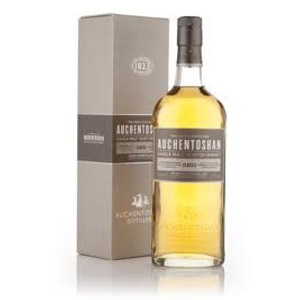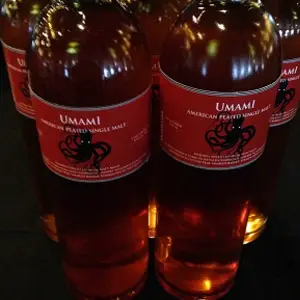How do you compare two whiskies when one costs $20 a bottle, and the other costs $50? Are statements like “the $50 whisky is more elegant and refined” useful to anyone? Has there ever been a situation where a $20 bottle was better than a $50 bottle?
As in most industries these days, products adhere to an ad-hoc set of quality tiers. When you produce a whisky, hundreds of factors contribute to affect its eventual quality. Some of these, such as the quality of ingredients, width of the heart cut, quality (expense) of maturation wood, and age of blending components are controllable. Some, like the specific makeup of the distillation system and the recipe, are more or less set in stone (unless you can afford to run 10+ year-long experiments). This yields an interesting dichotomy in the world of spirits production. Some products are created to be cheap. Johnny Walker Red Label, for example, is intentionally blended to hit a specific low price-point. Sure, Diageo claims that they create a “quality” product, but if quality was the only goal, there wouldn’t be price tiers of Johnny Walker – it would all be Blue Label, and it would all be expensive. Some products, however, are of high quality through some serendipitous accident of factors. Pappy Van Winkle bourbon, for example, is almost unequaled in the world of bourbon. Don’t you think if other bourbon distillers could match the quality of Pappy, they would, at whatever cost?
The booze world isn’t the only industry structured around this idea of intentional quality tiers. Kitchen equipment, power tools, computer components… almost everything you can buy is segmented into “value” options and “quality” options. This idea stuck in my head when I was drinking coffee made from beans from a local coffee roaster. The quality was astounding, and yet just the day before I’d made downright wretched coffee – using the same procedure – from similarly packaged beans from Trader Joe’s. The major difference? Price. Go to Target, you can buy a $15 toaster, or a $100 toaster. At Sears, you can choose a $400 washing machine, or a $1400 washing machine. While the pricier one may have additional features, you can bet the big difference is in the quality and longevity of the components. See how long that $15 toaster lasts.
Of course, one can’t take a myopic view of this. Price does not necessarily equate to quality. Since many factors determine the final price (market buzz, cost of labor, cost of distribution) including the big one, economies of scale, an $80 bottle from a small craft producer may actually be of lower quality than a $50 bottle from a multinational conglomerate. It costs a lot more money, per barrel, to make a small amount of whisky at once than a large amount. This is especially true if a producer is limited by the size of stills, the availability of ingredients, and the amount of capital available to bond a warehouse for aging. Luckily for consumers, the downstream effect of making larger batches is generally a reduction in overall quality (exigencies of large-scale production require the overlooking of or inability to catch small flaws in the product), so those “small batch” whiskies are generally of higher quality than their big-batch rivals, and thus the price difference is justified.
Here’s the problem, though. A high-cost, but high-quality alternative is not always available. We had a repairman out to fix our ailing washing machine this week, and he told me something interesting. He said an older (15 year-old) model like ours would last forever with occasional repair and maintenance, while all of the newer models, including the most expensive, all fail after 5 to 10 years and can’t be repaired. Some company figured out that if it allowed enough manufacturing defects to enter the line by reducing quality controls and increasing efficiency, it would achieve two goals at once: reduction in retail cost and increase in replacement purchases. It didn’t take long for EVERY manufacturer to follow suit, leaving us with a swath of products that are guaranteed to fail, regardless of their quality tier, from TVs to toasters. The same thing happened recently in computer hard drives. A consolidation of the business in the last 5 years eliminated the two producers of consistently high-quality hard drives, leaving a market where every drive has above-average failure rates. It’s currently not possible to buy a 3+ TB internal 3.5″ hard drive with at least a 4/5 rating on Newegg.com.
It takes a big risk from an innovative company to break out of this mold. An arguable case in point: Dyson. They make some of the most expensive vacuums available – many twice the price of competitors – but they consistently top consumer advocacy ratings and customer reviews. They figured out that in a world full of breaking vacuums, people would pay top dollar for a reliable alternative. Until recently, Apple Computer has done the same thing with personal computers and mobile devices.
What does this mean for your whisky budget? The key is to identify the tiers, and set your expectations accordingly. If a whisky is targeted at a $30 price range, that’s an admission by its producer that either large-scale production or low-cost ingredients have created a sub-standard whisky that is meant either for mixing or for drinking “daily” – trading quality for cost. If a whisky is targeted at an $80 – $100 price range, though, it could be either an indication of a high-quality whisky with care, concern, and top-dollar ingredients put into its production… or it could be a money-grab by a company looking to profit from the global craze for whisky. Unless you’ve got an amazingly stocked local bar or an unlimited whisky budget, the only way to sort out the two is by reading online reviews and listening to advice from experienced friends. Don’t just read one, though – I usually check Google for two or three reviews before buying an entire bottle of an untasted whisky. In these times of escalating costs and plummeting quality (just look at The Macallan’s strategy for selling younger whisky for more money or Diageo’s Talisker 18 increases), it’s Buyer Beware for sure.
To help, check out my (somewhat outdated) list of price points. These are what I consider to be the tiers of quality available to the whisky consumer. Read with caution, though, because every day these become another few cents too low, and you MUST scale these values to match your local market. Many markets (such as Canada) are inflated across the board due to taxes, government controls, and import laws. My $30 tier may be your $50 tier.





I hear you and other whisky guys constantly talking about rising whisky costs, and I didn’t believe it until I finally saw it affect my own stable: last week one of my “daily” whiskies just upped its price by about 30%.
I shudder to think of what prices will look like 2 or 3 years from now. I shudder even more to think about this bubble occurring in my beloved rum shelves, which are already fairly underpriced.
My dear Sirs, I wager it is not the cost of your whisky going up. It’s all of our debt laden currencies buying power going down.
I bet that if you compared your prices of whisky 10 years ago with silver. You’d find it about the same or even less.
😉
Super article. The cynical built-in failure strategy, such as you refer to in washing machines, is I think known as ‘design life’ in the car industry. Back on topic, I totally agree that economies of scale may well make a big brand £30 bottle ‘better quality’ than a £60 bottle from a small farmhouse distillery. But what a shame it would be if all the small, interesting, probably family-owned distillers were eventually priced out the market.